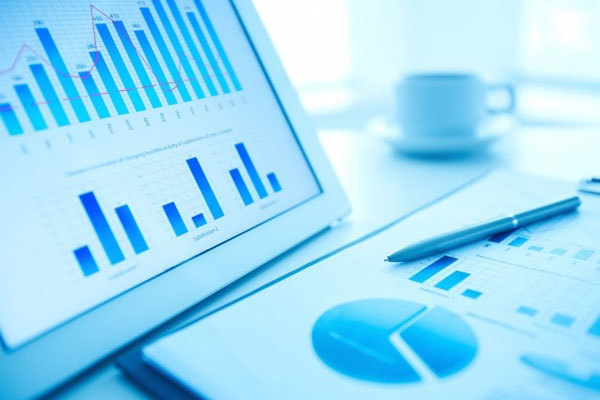 |
Implementing the Law on Accounting 2015, the government has reported to the National Assembly Standing Committee that in the fiscal year 2019, the Vietnamese state’s financial surplus officially totalled more than $30.9 billion, up by $2.32 billion or 8.11 per cent against 2018.
Such a surplus will be thoroughly discussed at the first session of the 15th National Assembly taking place during July and August.
Of which, the surplus within the central budget was over $23.53 billion, up 14.89 per cent. This includes a $3.2 billion surplus in the central-level state budget and a $20.33 billion surplus in local-level state coffers.
Meanwhile, the surplus outside the central budget was over $7 billion, down 10.01 per cent on-year.
According to the Ministry of Finance (MoF), the Vietnamese state’s financial surplus in 2019 was quite positive, reflecting good performance of the state’s financial activities.
In a report sent to the government, the MoF revealed official results of these activities, demonstrating the clearest gauge of the nation’s financial security, which remained healthy.
Specifically, in 2019, the state’s total revenue officially stood at nearly $104.34 billion, up nearly 18 per cent on-year largely thanks to a rise of $5.34 billion in revenue from taxes and fees, an increase of nearly $6 billion in other sources of the state budget, and a climb worth $3.95 billion in the state’s non-state-budget financial funds.
Broken down, the state’s total revenue include revenue from the state budget being $70.87 billion or 67.98 per cent of the state’s total revenue in the year – up 20.13 per cent on-year, and revenue from non-state-budget being over $33.38 billion or 32.02 per cent of the state’s total revenue – up 13.62 per cent against 2018.
Meanwhile, the state’s total spending in 2019 sat at nearly $73 billion, up 22.68 per cent as compared to the previous year, largely because of a rise in expenditure of $6.6 billion for depreciation in economic activities, and an expansion in salaries worth total $5.25 billion, as well as an ascension worth $1.52 billion for spending for other types of fees.
The state’s total spending in 2019 embraced expenditure of over $43.48 billion from the state budget, equivalent to 64.2 per cent of the state’s total spending in the year, and expenditure of $26.37 billion from non-state-budget resources, tantamount to 35.98 per cent of the state’s total spending.
Also carrying out the Law on Accounting 2015, the government has reported to the National Assembly Standing Committee about the state’s assets, debts, and also capital for the period.
Specifically, by December 31, 2019, the state’s total assets were valued at nearly $510.43 billion, up from nearly $473.47 billion recorded in the previous year. In which, the assets created from state-owned capital sources were worth close to $367.82 billion and those generated from the state’s debts sat at nearly $142.6 billion.
Notably, the state’s financial investments in 2019 were valued at $108.26 billion, up by $4.01 billion as compared to December 31, 2018. This included the state’s capital of $69.13 billion invested in enterprises, banks, and financial institutions under the central and local management. This also included the state’s financial investment capital valued at $38.89 billion.
Also, by the end of 2019 the state’s total debts stood at nearly $142.6 billion or 27.93 per cent of the state’s total asset values, up 4.39 per cent from December 31, 2018, largely due to a rise of $5.68 billion in the government’s debt.
Moreover, the state’s total capital by December 31, 2019 was $367.82 billion, up 9.15 per cent as compared to the end of the previous year.
The government has predicted that the total state budget revenue this June will be about $3.34 billion, increasing the total figure in the first half of 2021 to over $32.4 billion.
In the first six months, revenues from domestic activities are estimated to be 53.5 per cent of initial estimates, up 8.4 per cent on-year. Revenue from crude oil is estimated to reach 83.9 per cent of initial estimates, down 8.8 per cent on-year; and revenue from export-import activities hit 66.1 per cent of initial estimates, up 30.7 per cent as compared to that in the same period last year.
Meanwhile, the government also reported that state budget spending in the first half of 2021 is estimated to be 43 per cent of initial estimates, in which expenditure for investment development is estimated to reach 34.1 per cent, and recurrent spending is about 48.5 per cent.
The MoF reported that in the first five months, there was a surplus in the state budget of $3.76 billion thanks to a rise in revenue created significantly by an increase in domestic business and production activities.
Specifically, while state budget spending was $25.29 billion, total state coffers revenue hit over $29 billion, up 15.2 per cent on-year. In which, domestic revenue totalled $24 billion, up 14.2 per cent; revenue from crude oil exports touched $693.9 million, down 18.4 per cent; and revenues from export-import activities sat at $4.28 billion, rising 30.1 per cent.
Source: VIR

Vietnam expects to see export growth in rising global demand
Global demand for goods is recovering and this is an opportunity for Vietnam to boost its exports of consumer and industrial products, according to the Ministry of Industry and Trade (MoIT).

Vietnam posts State budget surplus in Jan-Jun amid Covid-19
Vietnam posted a State budget surplus in the first half of 2021 as revenue outpaced spending despite Covid-19 raging in many parts of the nation, according to the Ministry of Finance.